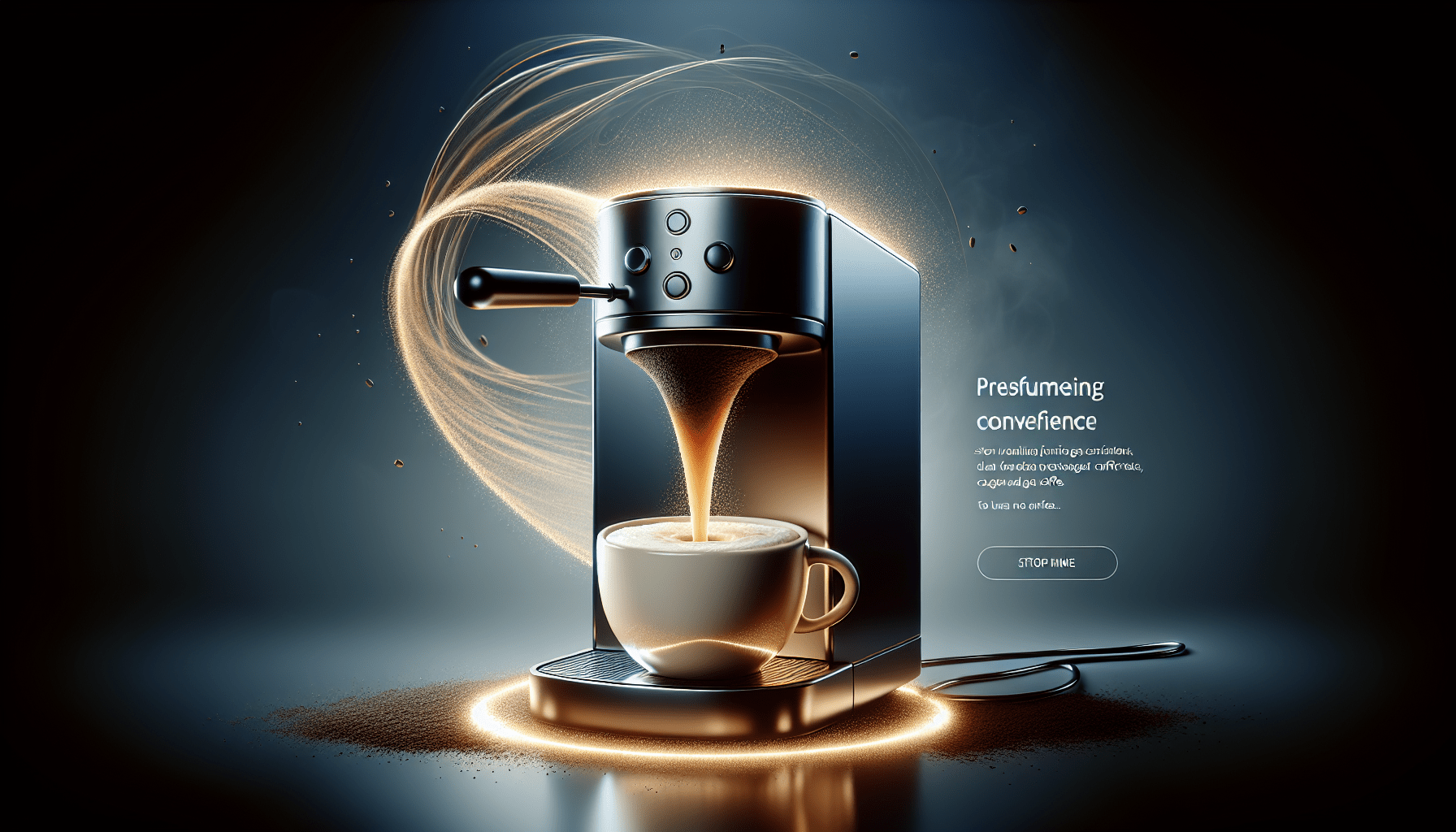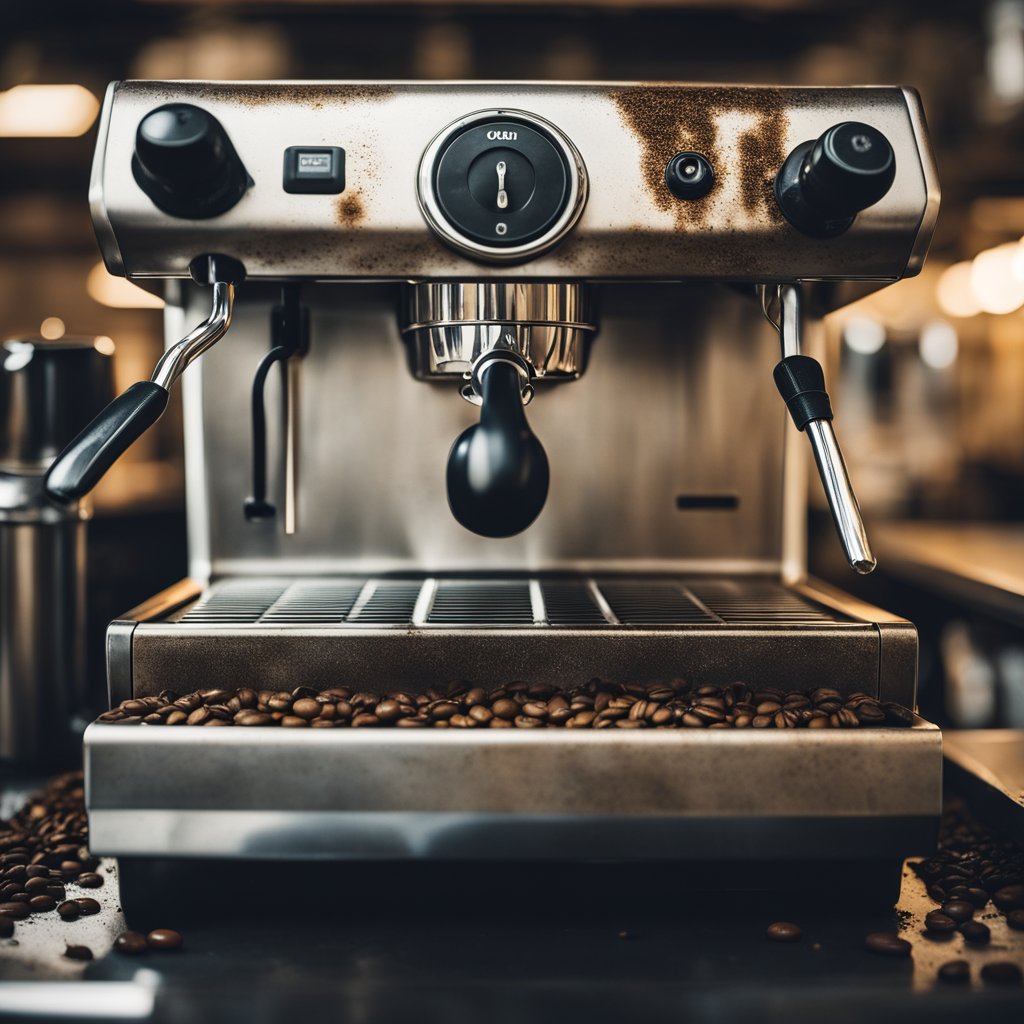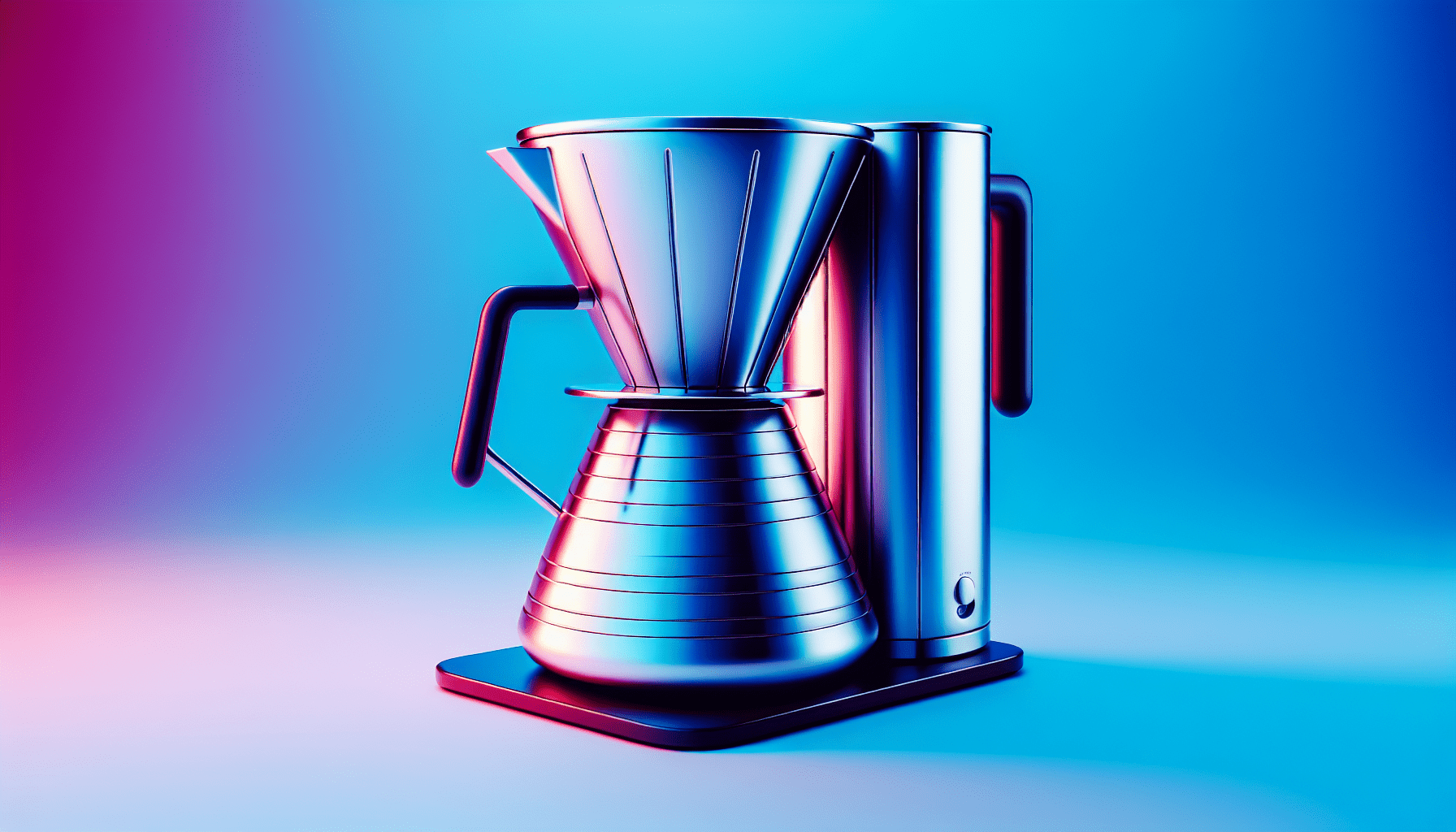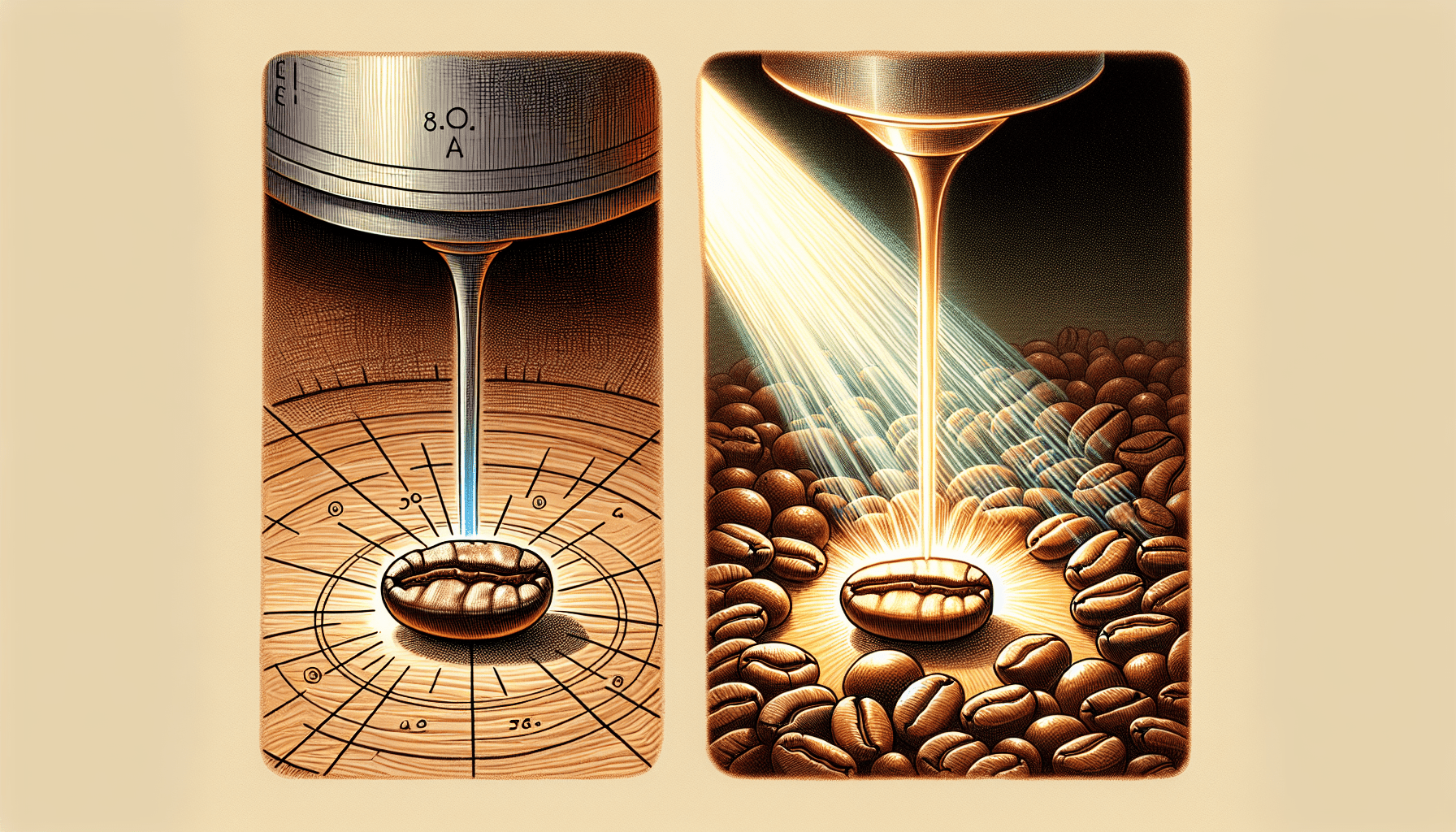Imagine waking up in the morning, craving the rich aroma and comforting taste of freshly brewed coffee. But then you realize you forgot to buy whole coffee beans – all you have is a bag of pre-ground coffee. The question then arises: can you use pre-ground coffee in a coffee maker? Well, the good news is that you absolutely can! In fact, using pre-ground coffee in a coffee maker offers convenience, simplicity, and a perfect cup of joe to start your day off right. So, let’s explore the ins and outs of using pre-ground coffee in your coffee maker, and discover how to make the most out of this readily available option.
What is pre-ground coffee?
Pre-ground coffee refers to coffee that has already been ground and packaged before it is purchased by the consumer. It is a convenient option for those who want to skip the step of grinding coffee beans at home and simply brew a cup of coffee using a coffee maker.
Definition of pre-ground coffee
Pre-ground coffee is made by processing coffee beans through a grinding machine, resulting in a uniform, fine consistency. It is widely available in both traditional brick-and-mortar stores and online retailers, making it easily accessible to coffee lovers everywhere.
How is pre-ground coffee made?
The process of making pre-ground coffee involves several steps. First, the coffee beans are harvested and processed to remove the outer layer of the fruit, leaving behind the green coffee beans. These beans are then roasted to bring out the flavors and aromas. After roasting, the beans are cooled and then transferred to a grinding machine where they are ground to the desired consistency. The ground coffee is then packaged and ready for sale.
Types of coffee makers
Coffee makers come in a variety of types, each offering a unique brewing method and flavor profile. Here are some commonly used coffee makers:
Drip coffee makers
Drip coffee makers are the most popular type of coffee maker, known for their simplicity and ease of use. They work by pouring water over ground coffee, which then drips down into a pot or carafe. Drip coffee makers are ideal for brewing large batches of coffee and are commonly found in households and offices.
French press
The French press, also known as a press pot or plunger pot, is a manual brewing method that produces a rich and full-bodied cup of coffee. It consists of a cylindrical glass or metal container with a plunger and a mesh filter. To use the French press, you add ground coffee and hot water, allow it to steep for a few minutes, and then press the plunger down to separate the liquid from the grounds.
Espresso machines
Espresso machines are designed to produce concentrated coffee by forcing hot water through finely ground coffee at high pressure. These machines are capable of creating a wide range of coffee-based drinks, such as espresso shots, lattes, and cappuccinos. They are often used in coffee shops and by coffee enthusiasts who enjoy the strong and intense flavors of espresso.
Pod coffee makers
Pod coffee makers, also known as single-serve coffee makers, are a popular option for those who value convenience and simplicity. These machines use pre-packaged coffee pods or capsules, which contain pre-ground coffee. With just the push of a button, the machine heats the water and brews a single cup of coffee. Pod coffee makers offer a wide variety of flavors and are great for those who want a quick and hassle-free brewing experience.
How does a coffee maker work?
To understand how a coffee maker works, it is important to know the basic components and the brewing process involved.
Explanation of coffee maker components
A typical coffee maker consists of a water reservoir, a heating element, a filter basket, and a carafe or pot to hold the brewed coffee. The water reservoir holds the cold water that will be heated and used for brewing. The heating element, usually located at the base of the machine, heats the water and brings it to the desired temperature. The filter basket holds the ground coffee and allows water to pass through, extracting the flavors and oils. The carafe or pot collects the brewed coffee for serving.
Brewing process in a coffee maker
When you use a coffee maker, the brewing process starts by adding water to the reservoir and filling the filter basket with pre-ground coffee. Once the machine is turned on, the heating element begins heating the water, which then travels through a tube and reaches the filter basket. The hot water extracts the flavors and oils from the coffee grounds as it passes through, and then drips down into the carafe or pot. The brewing process typically takes a few minutes, depending on the type of coffee maker and the desired strength of the coffee.
Advantages of using pre-ground coffee in a coffee maker
Using pre-ground coffee in a coffee maker offers several advantages that make it a popular choice for many coffee enthusiasts.
Convenience
One of the main advantages of pre-ground coffee is the convenience it provides. With pre-ground coffee, you can skip the step of grinding coffee beans at home, saving time and effort. This is especially beneficial for those who have busy schedules and want a quick and easy way to enjoy a cup of coffee.
Availability
Pre-ground coffee is readily available in various brands and flavors. You can find it in supermarkets, specialty coffee shops, and online retailers. This wide availability ensures that you can always have access to your favorite coffee without the need to search for specific beans and grind them yourself.
Consistency
Pre-ground coffee offers a consistent grind size, ensuring a uniform extraction and a balanced cup of coffee. This consistency eliminates the need for adjusting grind size, which can be a complex and time-consuming process. Whether you are a beginner or an experienced coffee enthusiast, pre-ground coffee provides a reliable and predictable brewing experience.
Disadvantages of using pre-ground coffee in a coffee maker
While pre-ground coffee offers convenience, there are some drawbacks to consider when using it in a coffee maker.
Loss of flavor
One significant disadvantage of pre-ground coffee is the potential loss of flavor. Once coffee beans are ground, the volatile compounds that contribute to the aroma and taste begin to degrade. As a result, pre-ground coffee may lack the rich and complex flavors that are present in freshly ground coffee. If you are a coffee purist or someone who values the nuances of flavor, using pre-ground coffee may not provide the same level of satisfaction.
Staleness
Another drawback of pre-ground coffee is the risk of staleness. Ground coffee, when exposed to air, can quickly become stale as the flavors and aromas dissipate. While coffee manufacturers take measures to package pre-ground coffee in a way that minimizes exposure to air, it is still a concern to be aware of. Stale coffee can result in a flat, dull taste, further diminishing the overall coffee experience.
Limited control over grind size
When using pre-ground coffee, you have limited control over the grind size. Different coffee makers require specific grind sizes to achieve optimal extraction and flavor. With pre-ground coffee, you must rely on the manufacturer’s choice of grind size, which may not necessarily be ideal for your specific coffee maker. This lack of control can impact the taste and overall quality of your brewed coffee.
Choosing the right grind size for your coffee maker
Grind size plays a crucial role in the extraction process and affects the flavor and strength of your coffee. It is essential to determine the appropriate grind size for your specific coffee maker.
Effects of grind size on extraction
The grind size of coffee grounds affects the rate at which water can extract the flavors and oils from the coffee. A finer grind allows for more surface area contact with water, resulting in a quicker extraction and a stronger, more intense flavor. Conversely, a coarser grind slows down the extraction process, resulting in a milder and less concentrated brew.
Grind size recommendations for different coffee makers
The appropriate grind size for your coffee maker depends on the brewing method being used. Here are some general recommendations:
- Drip coffee makers: Medium grind (similar to granulated sugar)
- French press: Coarse grind (similar to breadcrumbs)
- Espresso machines: Fine grind (similar to powdered sugar)
- Pod coffee makers: Varies depending on the specific brand and model. Consult the packaging for recommended grind size.
It is important to note that these recommendations are not definitive and can be adjusted based on personal preference. Experimenting with different grind sizes is key to finding the perfect balance for your desired taste.
Tips for using pre-ground coffee in a coffee maker
While using pre-ground coffee in a coffee maker may have its limitations, there are several tips you can follow to optimize your brewing experience and achieve a satisfying cup of coffee.
Proper storage of pre-ground coffee
To maintain the freshness of pre-ground coffee, it is crucial to store it correctly. It is best to keep pre-ground coffee in an airtight container, away from light, moisture, and heat. This helps to minimize exposure to oxygen, which can accelerate staleness. Additionally, it is advisable to use the coffee within a few weeks of opening the package to ensure the best flavor.
Measuring the right amount of coffee
Using the appropriate coffee-to-water ratio is essential for achieving a well-balanced and flavorful cup of coffee. Generally, a ratio of 1-2 tablespoons of coffee grounds per 6 ounces of water is recommended. However, the strength preference can vary, so feel free to adjust the amount of coffee to your taste.
Experimenting with water-to-coffee ratio
Apart from measuring the right amount of coffee, you can also experiment with the water-to-coffee ratio to customize your brew. Increasing or decreasing the amount of water used can impact the strength and intensity of the coffee. For a stronger cup of coffee, use less water, and for a milder cup, use more water.
Alternative options for fresh coffee flavor
If you are seeking a more vibrant and flavorful coffee experience, there are alternative options to consider.
Grinding your own coffee beans
Grinding your coffee beans at home provides the freshest and most flavorful cup of coffee. By investing in a coffee grinder and buying whole beans, you have complete control over the grind size, ensuring optimal extraction and flavor. Additionally, grinding coffee just before brewing helps to preserve the volatile compounds and aromas, resulting in a more satisfying coffee experience.
Using coffee subscriptions or specialty coffee brands
Coffee subscriptions and specialty coffee brands offer a wide range of high-quality and freshly roasted beans. These beans are typically sourced from specific regions, offering unique flavor profiles. By purchasing beans from specialty brands or subscribing to a coffee service, you can explore different flavors and enjoy a more nuanced and exceptional cup of coffee.
Frequently asked questions about using pre-ground coffee
Here are answers to some common questions about using pre-ground coffee in a coffee maker.
Can you reuse pre-ground coffee?
It is possible to reuse pre-ground coffee, but the resulting cup of coffee will be weaker and less flavorful than the first brew. Reusing pre-ground coffee can lead to over-extraction and bitterness, as much of the desirable flavors have already been extracted during the initial brewing process. It is advisable to use fresh grounds for each brew to achieve the best flavor.
Can you use flavored pre-ground coffee?
Yes, you can use flavored pre-ground coffee in a coffee maker. Flavored coffee offers a unique taste experience, with various options such as vanilla, caramel, and hazelnut. It is important to note that flavored pre-ground coffee may leave lingering flavors in the coffee maker, so cleaning the machine thoroughly after brewing flavored coffee is recommended.
Can you use finely ground coffee in a coffee maker?
Finely ground coffee is typically used in espresso machines, where the high pressure can extract the flavors efficiently. However, using finely ground coffee in a regular coffee maker may lead to over-extraction and a bitter taste. It is generally recommended to use a grind size suitable for your specific coffee maker to achieve the best results.
Conclusion
Using pre-ground coffee in a coffee maker offers convenience, availability, and consistency. It eliminates the need for grinding coffee beans and provides a uniform grind size. However, there are some drawbacks to consider, such as potential flavor loss, staleness, and limited control over grind size. By understanding the effects of grind size and following tips for using pre-ground coffee, you can optimize your brewing experience. Alternatively, grinding your own coffee beans or exploring specialty coffee brands can provide a more vibrant and flavorful cup of coffee. Ultimately, the choice between pre-ground coffee and other options depends on personal preferences and the level of convenience desired. Whether you are using pre-ground coffee or exploring other brewing methods, the joy of a freshly brewed cup of coffee awaits.




